What Are Sitelinks?
Sitelinks are links that appear below a search result or ad. They accompany the main listing and direct users to additional pages on the same website.
They usually appear for branded searches and help searchers discover more information about the website.
In the example below, the main URL at the top of the search engine results page (SERP) includes sitelinks for the login, contact, auto loan, and home mortgage rate pages.
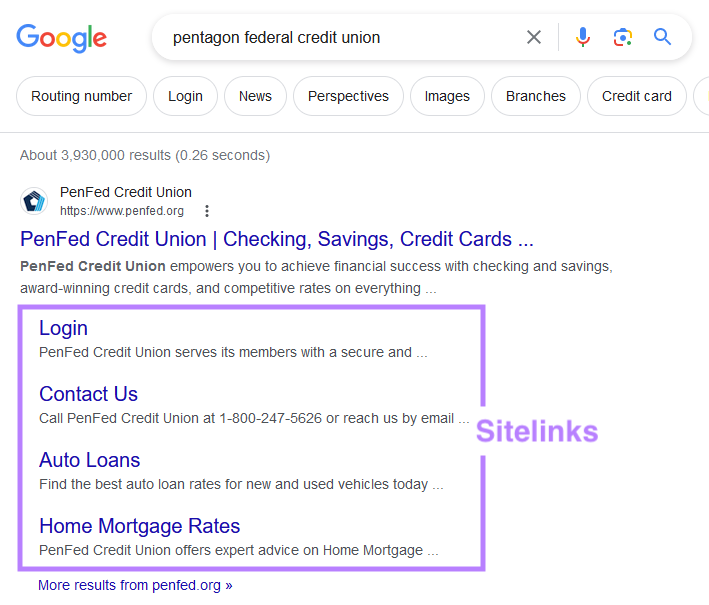
You don’t control if or when sitelinks appear in Google’s SERP (for both paid and organic sitelinks). However, you can influence the likelihood of Google displaying sitelinks when your website appears in search results.
What Are the Different Types of Sitelinks?
Organic Sitelinks
Organic sitelinks (sometimes called SEO sitelinks) usually appear for branded queries. They can show anywhere between one and six additional links to your website. They only appear on the top organic search result, but ads may still appear above this result.
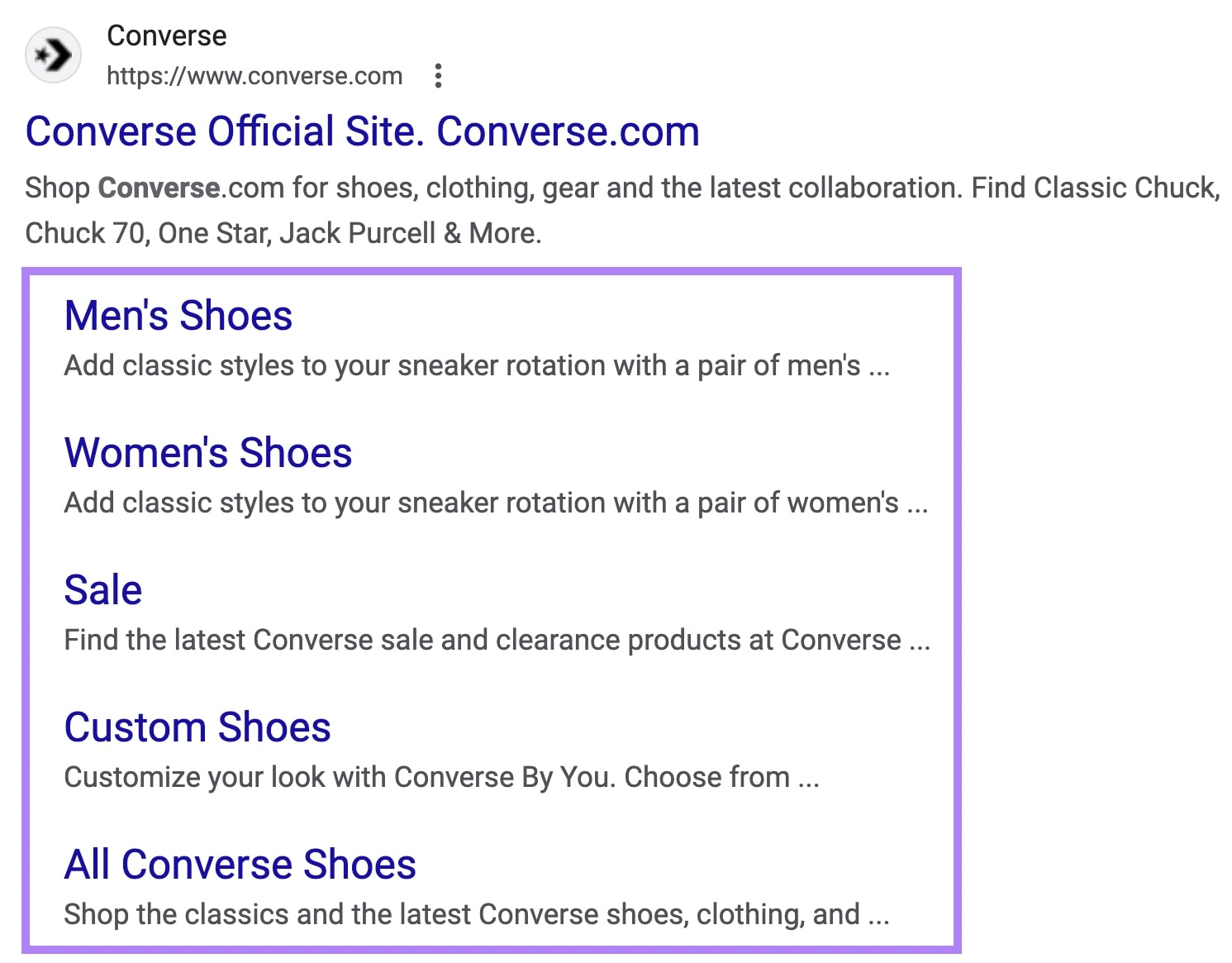
Organic One-Line Sitelinks
One-line sitelinks (sometimes called “inline sitelinks”) appear below an organic search result, displayed in one horizontal line. They can point to other site pages or to specific sections of the listed page.
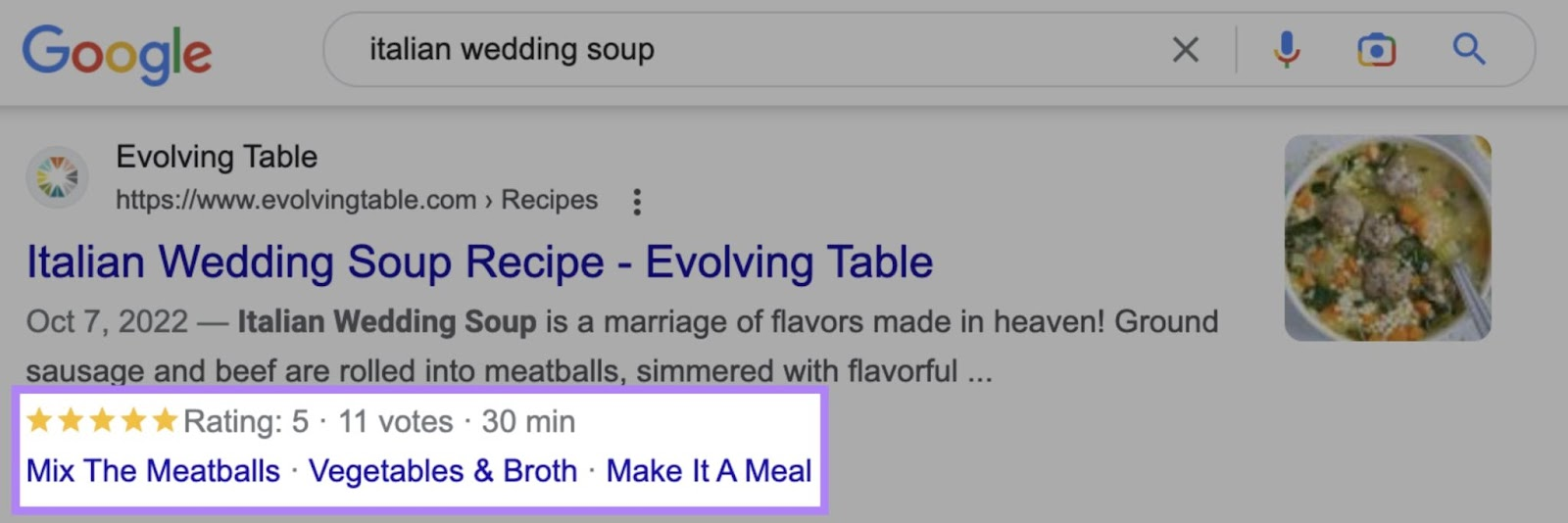
But unlike standard organic sitelinks:
- One-line sitelinks don’t have a descriptive text snippet
- One-line sitelinks can appear on results below the top organic result
Organic Sitelinks Search Box
The sitelinks search box is an input field that can appear below an organic search result. It lets users search the listed website directly from the Google search results page—without clicking through first.
For example, an “Epicurious” branded search may show a sitelinks search box.
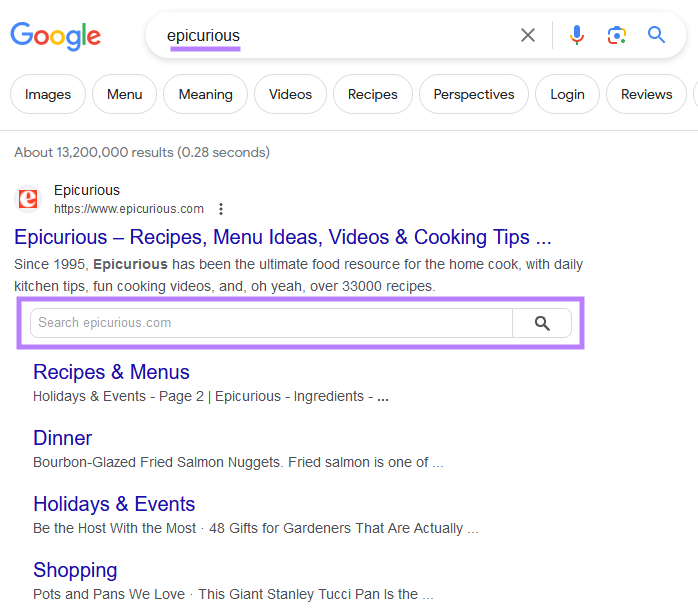
If you type “Swedish meatballs” into this box and press enter (or click the magnifying glass icon), you land on relevant search results on Epicurious.

The search results then look like this:
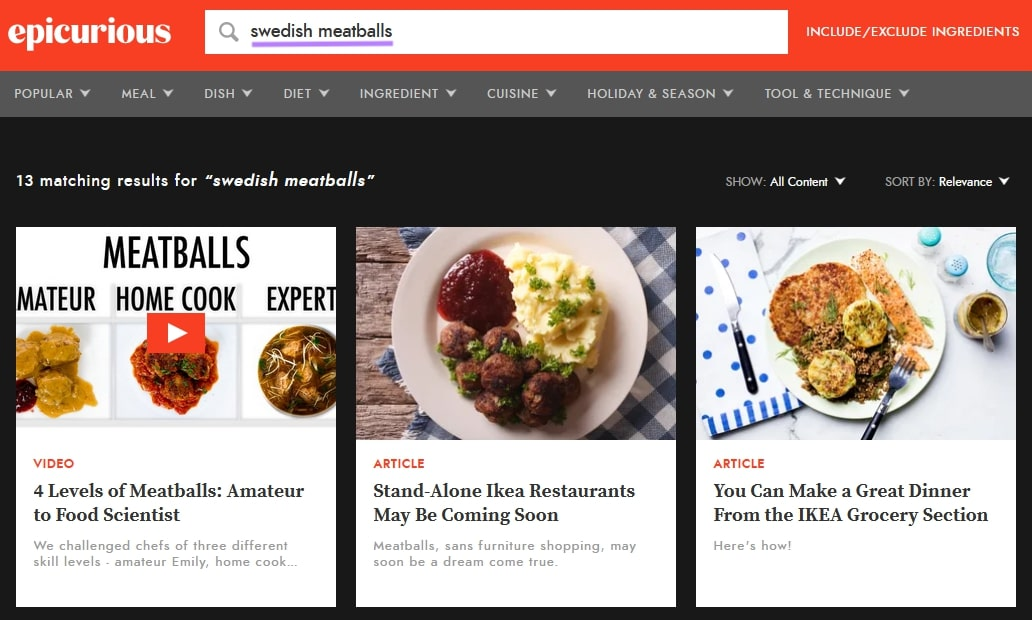
Although the sitelinks search box often helps users, you may want to remove it from your website’s listing. To do so, add this tag to your homepage:
<meta name="google" content="nositelinkssearchbox" />Note that Google may take time to remove the sitelinks search box.
Paid Sitelink Assets
Paid sitelinks are assets (formerly called “extensions”) that can appear in Google search ads and in YouTube results on mobile devices. You manage these via your Google Ads campaigns.
Here is an example of Google Ads sitelinks:
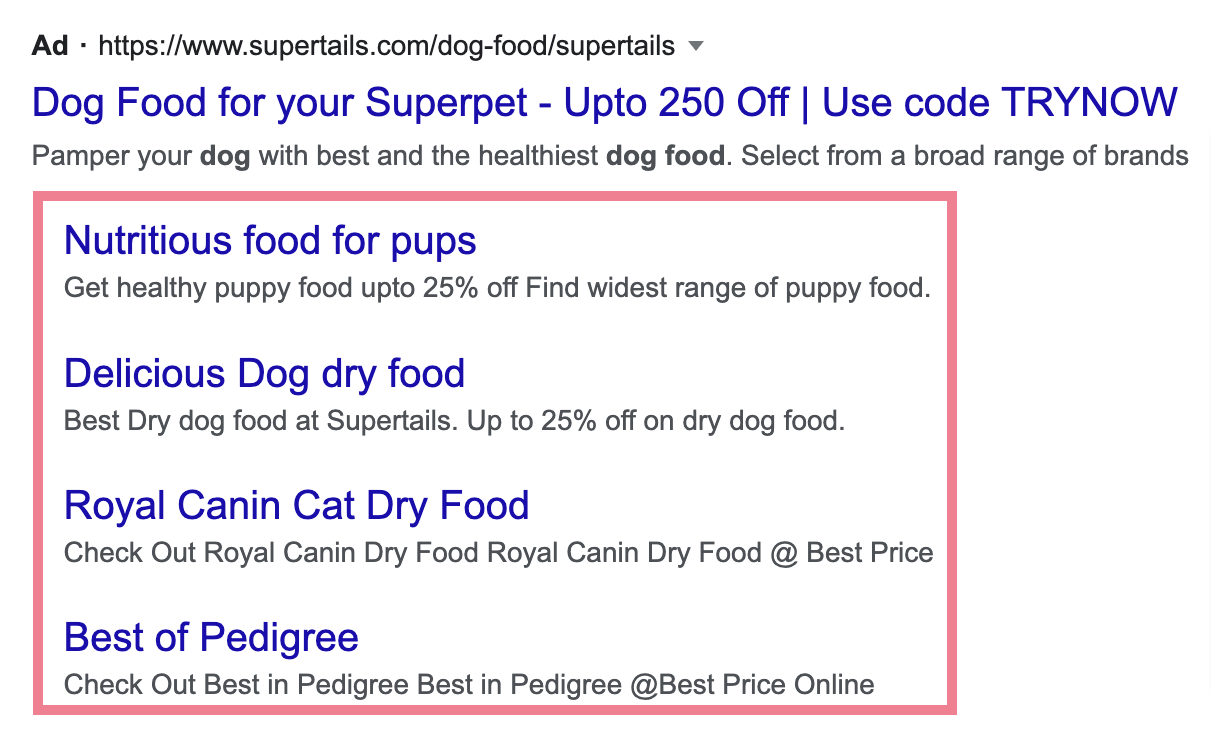
And here is an example of paid sitelinks in a video ad:
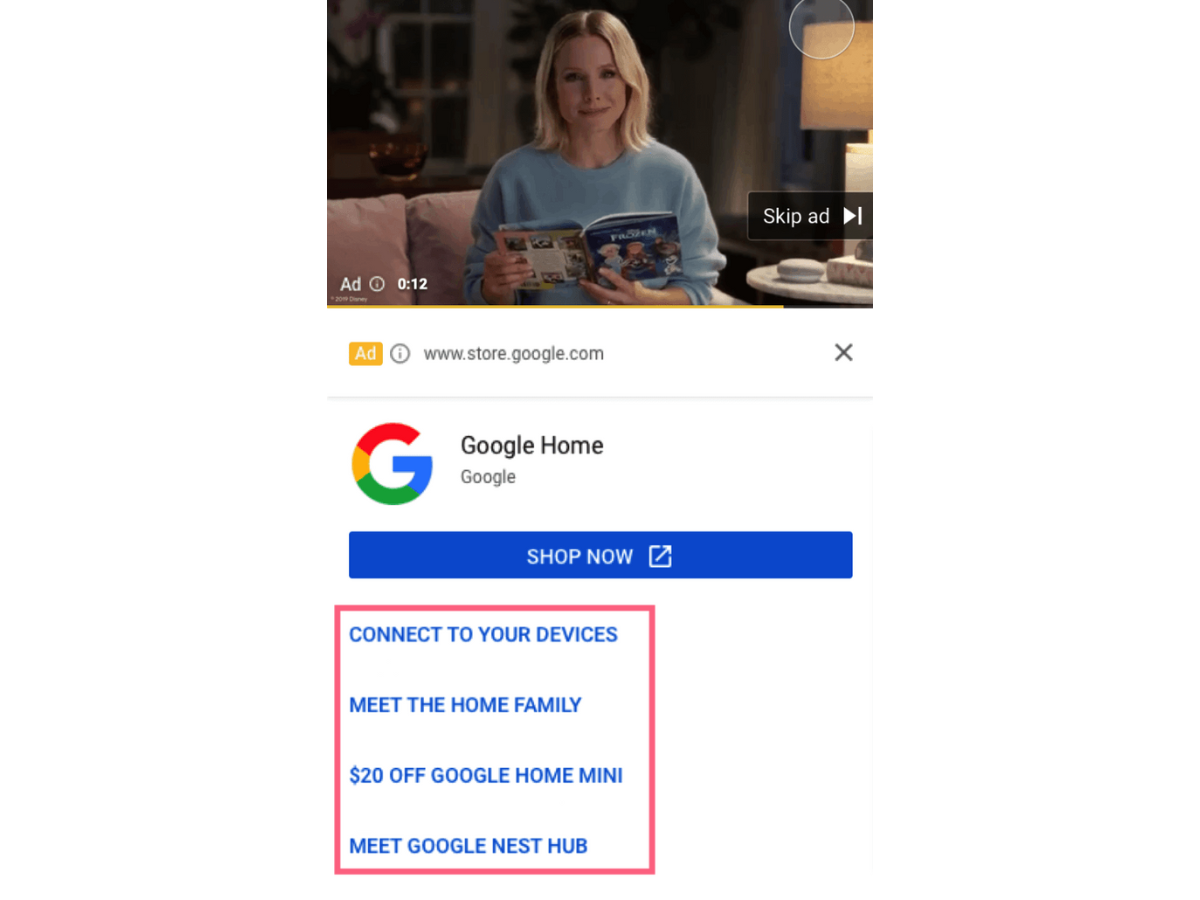
You can specify which links might appear as paid sitelinks by setting them up as ad assets. However, you can’t control exactly when Google decides to display them.
What Are the Benefits of Sitelinks?
Sitelinks benefit both you and your audience in several ways:
- They provide extra chances to capture organic traffic
- They occupy more space in the SERP, which increases visibility
- They help users reach key pages without making another search query
- They give potential visitors more information about your site, which can boost click-through rate (CTR)
More Options for Searchers to Visit Pages of Your Site
Sitelinks let searchers jump straight to deeper pages on your site. They often feature a short snippet of text below each link that can prompt users to click.
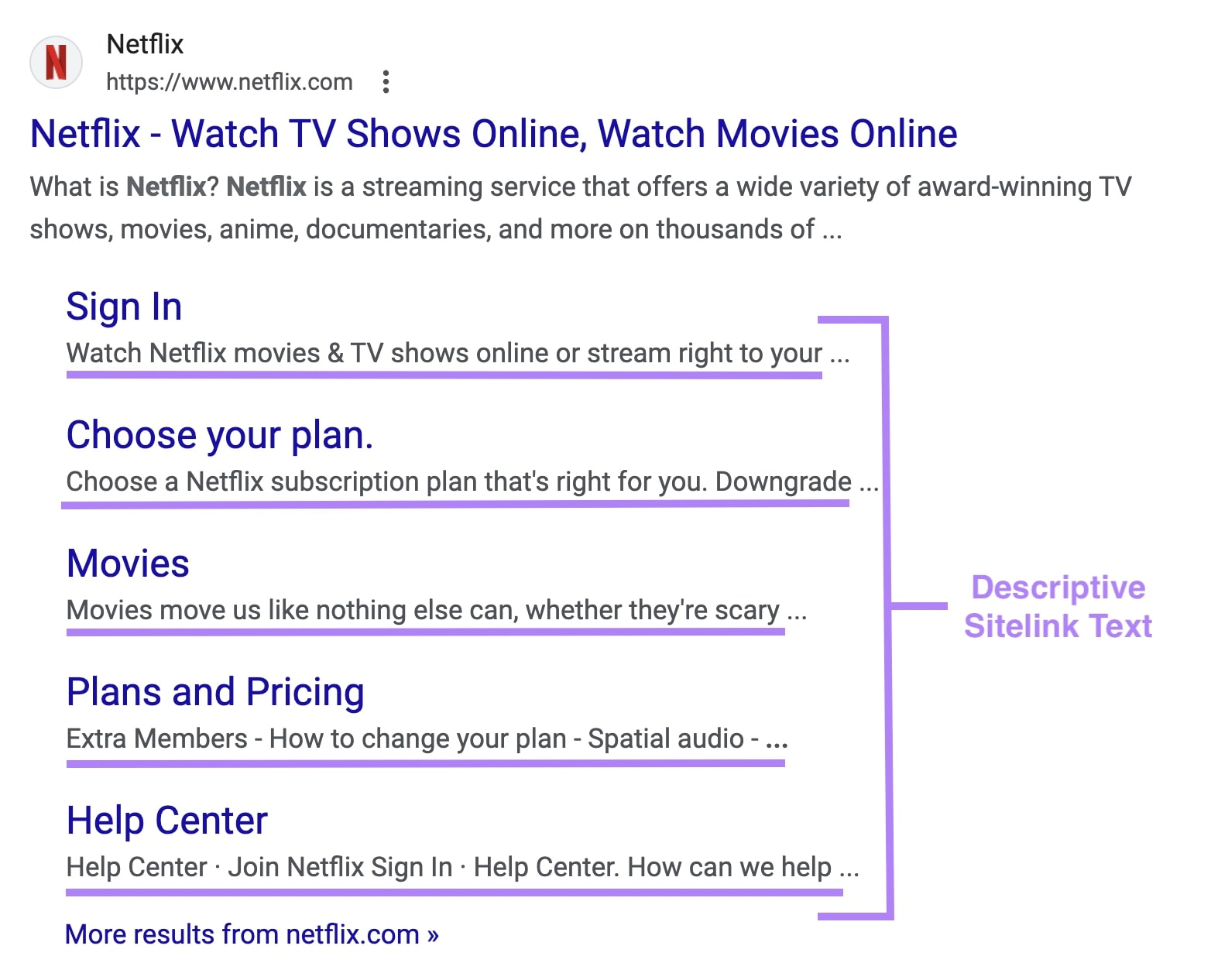
If a user searches for “Netflix,” they might click on the “Movies” sitelink to go there directly. This streamlines the searcher’s journey and can move people faster through your marketing funnel.
Higher Click-Through Rates (CTRs)
Sitelinks can increase click-through rates by offering more relevant choices. They also occupy more space on the results page.
This added space improves visibility, while the extra detail helps build trust and credibility. Both factors can lead to higher CTRs.
Greater Brand Awareness
Sitelinks can expose searchers to other pages on your site (like products, services, or contact pages). For example, Wilson’s SERP listing has sitelinks for five different product or category pages.
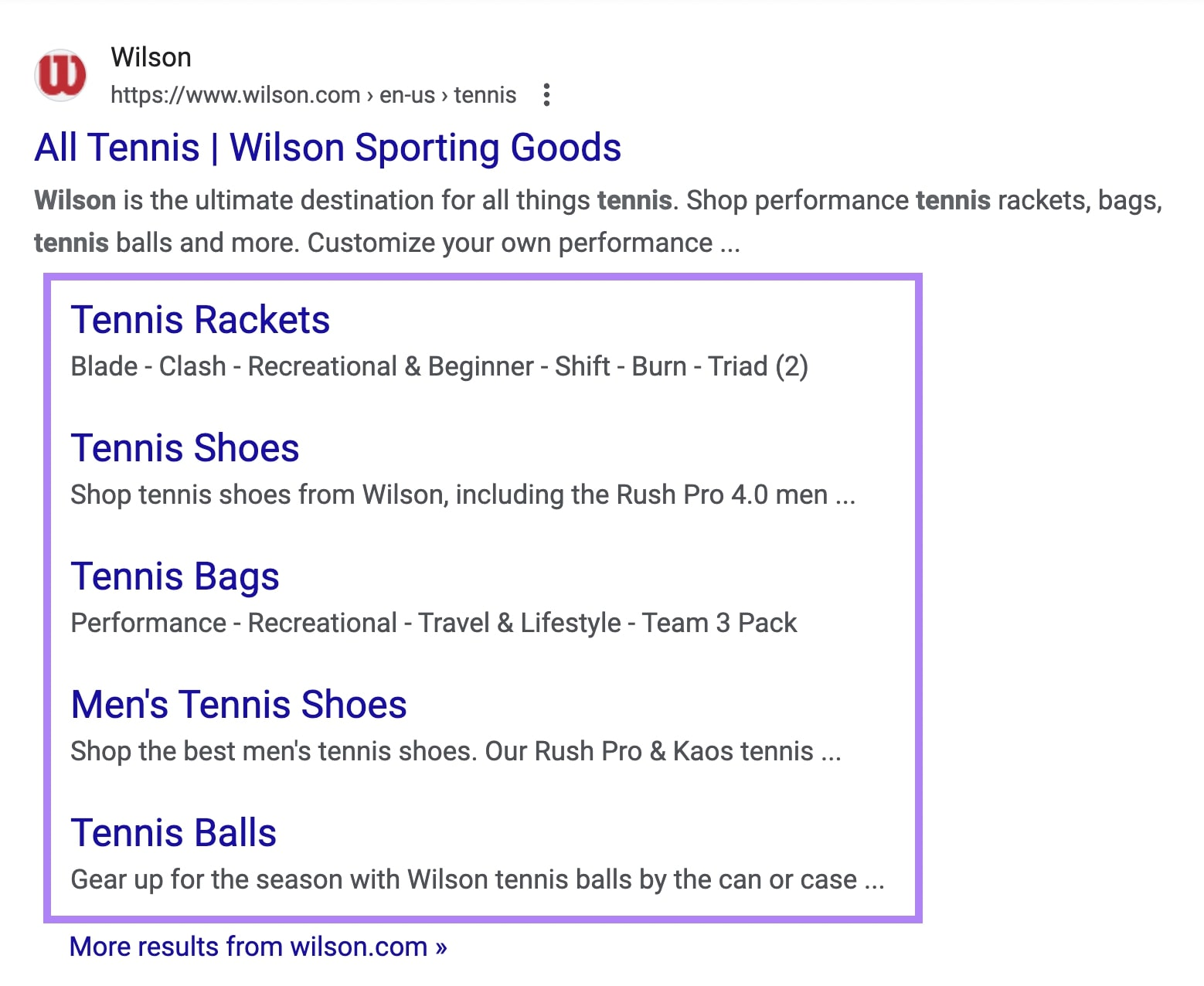
Your Site Can Appear More Trustworthy
The presence of sitelinks can signal that Google views your site as reliable. Google says it “only show[s] sitelinks for results when [it thinks] they’ll be useful to the user.”
Sitelinks can also help build trust with searchers by giving them a clearer view of your site’s content. Sitelinks can also indicate a well-structured site.
A well-structured site further improves your chances of earning sitelinks.
How to Get Sitelinks
Google automatically chooses where to display sitelinks. You can’t enable them yourself. But certain best practices can improve the odds of getting them.
Create a Logical and Intuitive Website Architecture
Google is less likely to show sitelinks if your site’s structure and navigation are unclear. A logical website architecture helps both users and search engines.
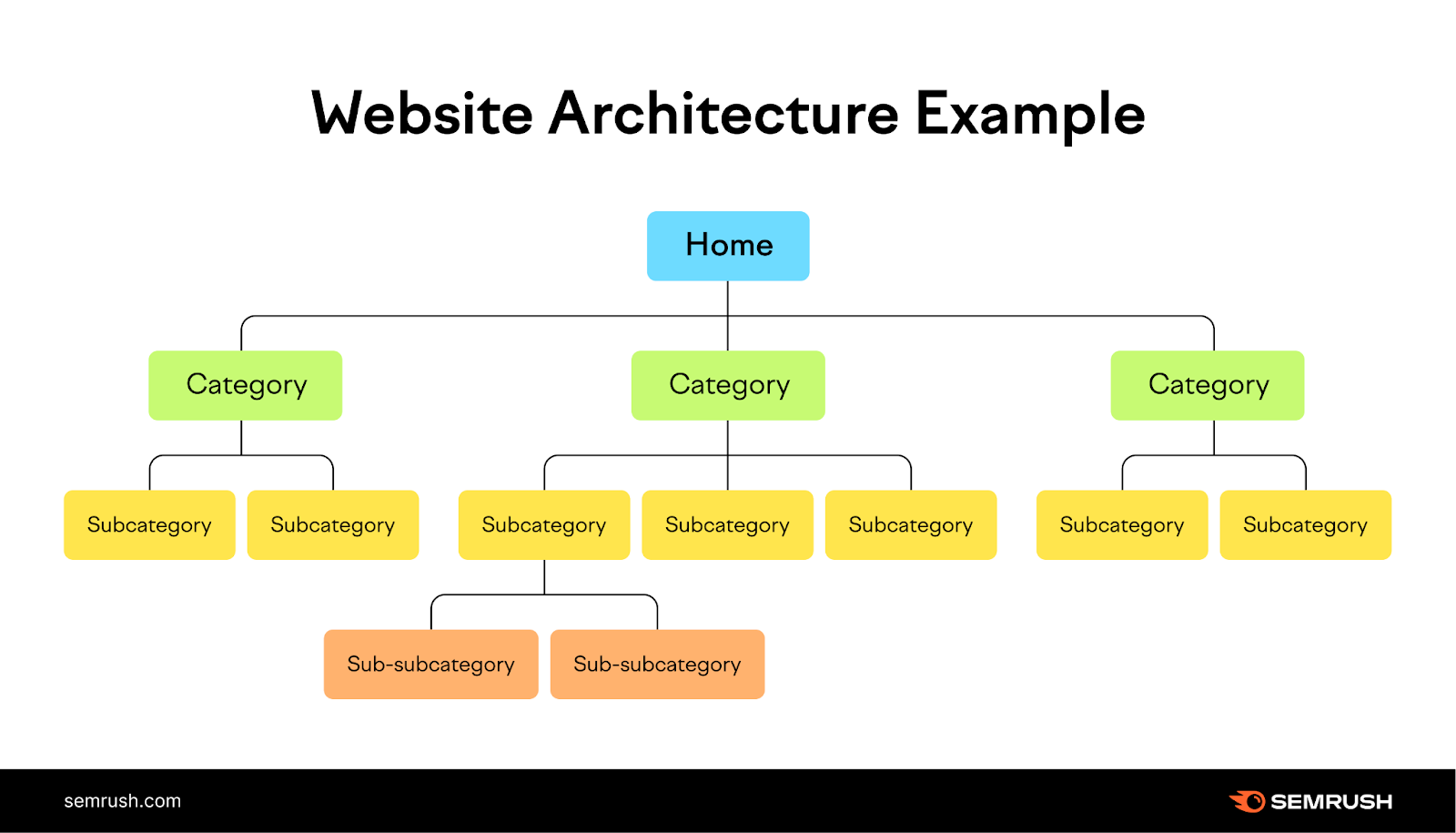
Group related content together, arrange these groups into a logical hierarchy, and emphasize the most important pages.
Create an XML Sitemap
An XML sitemap lists all the pages you want Google to index. It helps Google discover and crawl your pages more efficiently.
Many content management systems (like WordPress, Wix, Squarespace, and Shopify) generate an XML sitemap automatically. You can also use a sitemap generator.
Google can find your sitemap with its crawlers, but it is best practice to submit it in Google Search Console.
To submit a sitemap, go to the “Sitemaps” section under “Indexing.”
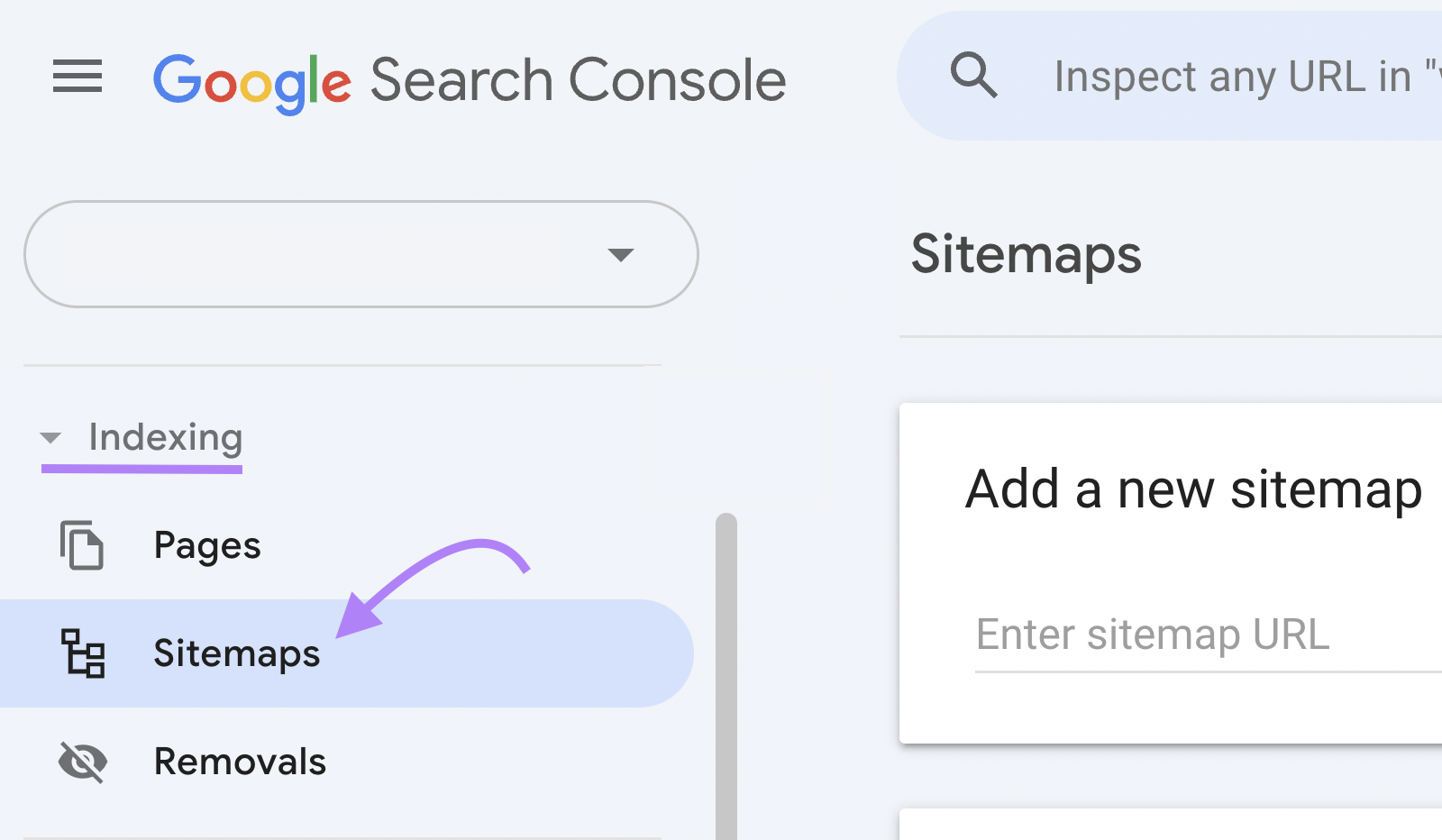
Enter the URL of your XML sitemap under “Add a new sitemap.” Then click “Submit.”

Link Internally to Strategic Pages
Internal links help search engines understand how your pages are related. They help Google interpret your site’s structure, which may influence whether sitelinks appear in search results.
By linking to related pages within your site, you provide more context about the page’s topic. You also show Google that these linked pages have significance to your brand.
Link to important pages (like top-level “about” or “services” pages) and to pages that encourage engagement or conversions (like product and tools pages).
The example below shows multiple sitelinks to different pages that describe the company, plus a page with a racquet finder tool and product category pages:
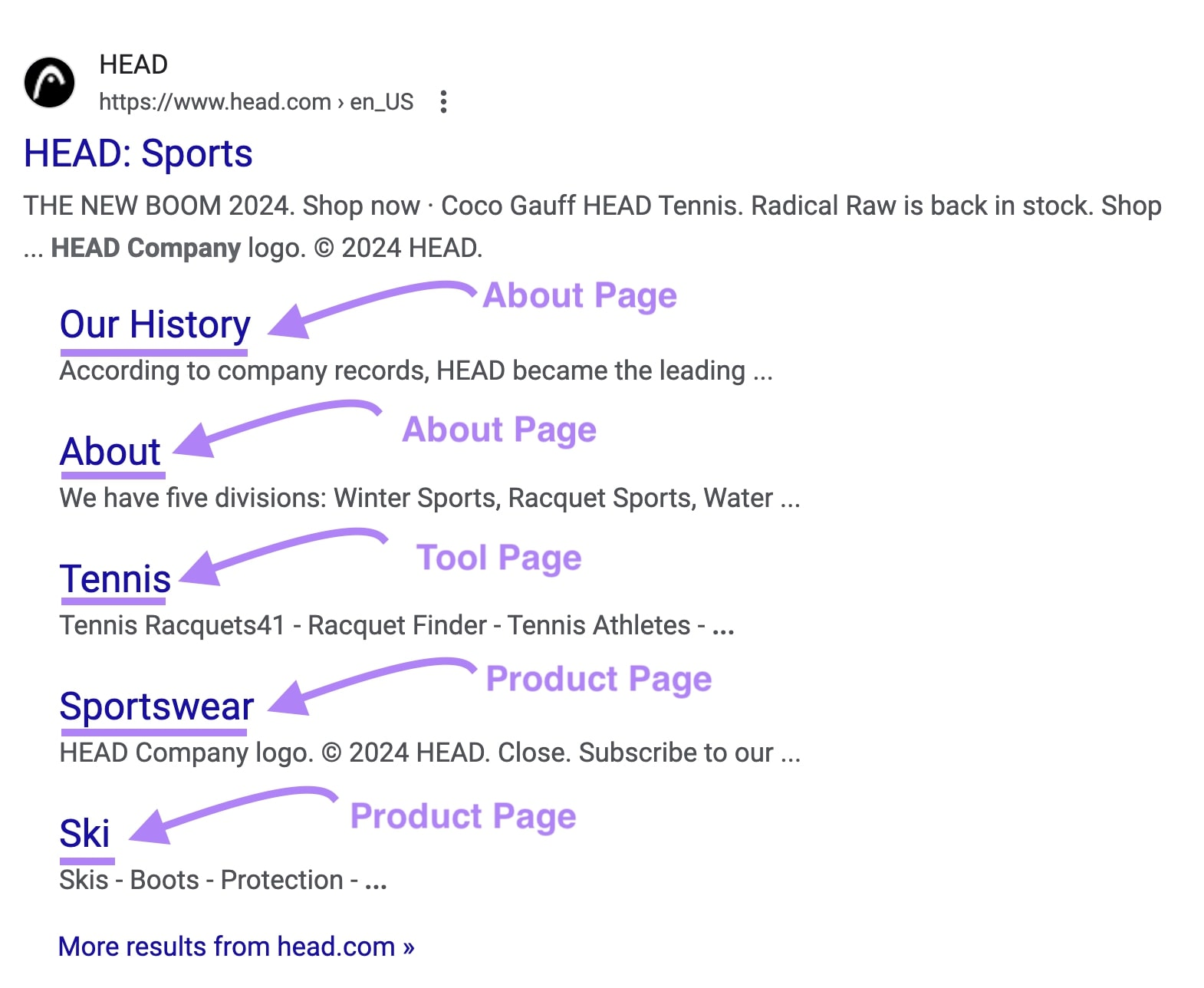
If these pages appear as sitelinks, they can help users explore your site more quickly and potentially convert faster.
Use Concise, Relevant Internal Link Anchor Text
Anchor text is the visible text of a hyperlink. It helps Google and users recognize what the linked page is about. Using concise, relevant anchor text is a recommended best practice from Google.
Below are a few examples for a page on the topic of “SEO strategy” (using square brackets to indicate the anchor text):
- Exact match: In our guide to [SEO strategy]
- Partial match: Learn various [SEO best practices and strategies]
- Brand and keyword: In the [Semrush SEO Strategy guide]
- Generic: [Click here] to read our guide about SEO strategy (not very descriptive)
- Naked: [https://www.semrush.com/blog/seo-strategy] (usually not recommended)
Diversify your anchor text to avoid over-optimizing for keywords. Use a mix of anchor text types in a natural way.
In the example below from one of our blog posts, the orange link points to the Advertising Research tool. That page might appear as a sitelink in search results.

Using internal links doesn’t guarantee sitelinks. The primary goal is to provide value to users with quick access to useful resources. So concise, relevant anchor text is a good practice, regardless of sitelinks.
Write Descriptive Title Tags
A page’s title tag often appears as a clickable link in search results. Google uses it (along with other signals) to understand what your page is about and how relevant it is to specific queries.
Your title tag should describe the page’s content and include a relevant keyword. Aim for 50 to 60 characters to avoid truncation in search results.
Here’s an example of what a title tag looks like in a page’s code:

As with internal linking, optimizing your title tags can help Google understand your page. This can influence whether that page appears as a sitelink.
Make Sure Your Site Ranks for Your Brand Name
Google often shows sitelinks for the top-ranking result of a brand search. You can’t directly control your ranking, but you can increase your chances of ranking for your brand name and related keywords.
Mention your brand name in relevant areas on your pages and within your content. Follow best practices for internal links, title tags, and overall site structure. Also, build brand awareness through social media and digital PR.
These activities may not directly boost your sitelinks, but they can help Google understand your website and trust it. The more Google trusts your site, the more likely you are to see sitelinks appear.
Here’s an example of Klaviyo ranking with sitelinks for a term related to its brand:
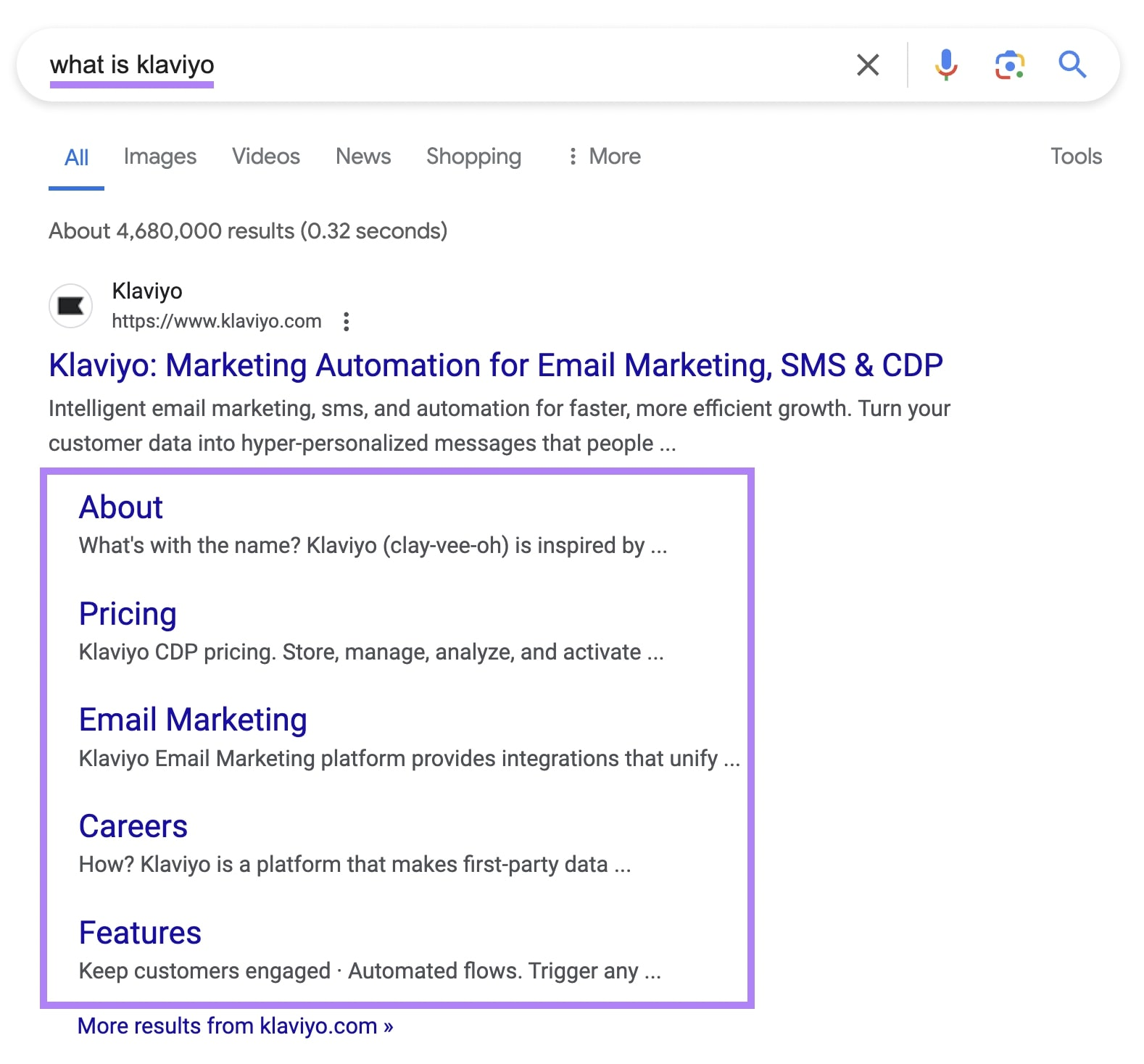
Use Structured Data for Search Engines
Structured data (or schema markup) is code you add to your pages so Google can better understand their content.
Common types include:
- Article: Use for news, blog posts, and article pages
- Product: Use for product pages to detail price, availability, and reviews
- Local Business: Use for local business details like operating hours, address, and phone number
- Event: Use for event pages like time and place
- Organization: Use on your homepage for details like business name, logo, and contact info
You can add structured data in various ways, depending on how your site is set up. If you use WordPress, you can install plugins that implement schema markup.
How to Analyze Your Sitelinks and Get More of Them
Sitelinks can capture more organic traffic. The Semrush Organic Research tool helps you analyze current sitelinks and find keyword opportunities to gain more.
Go to the Organic Research tool, type in your site’s domain, and click “Search.”
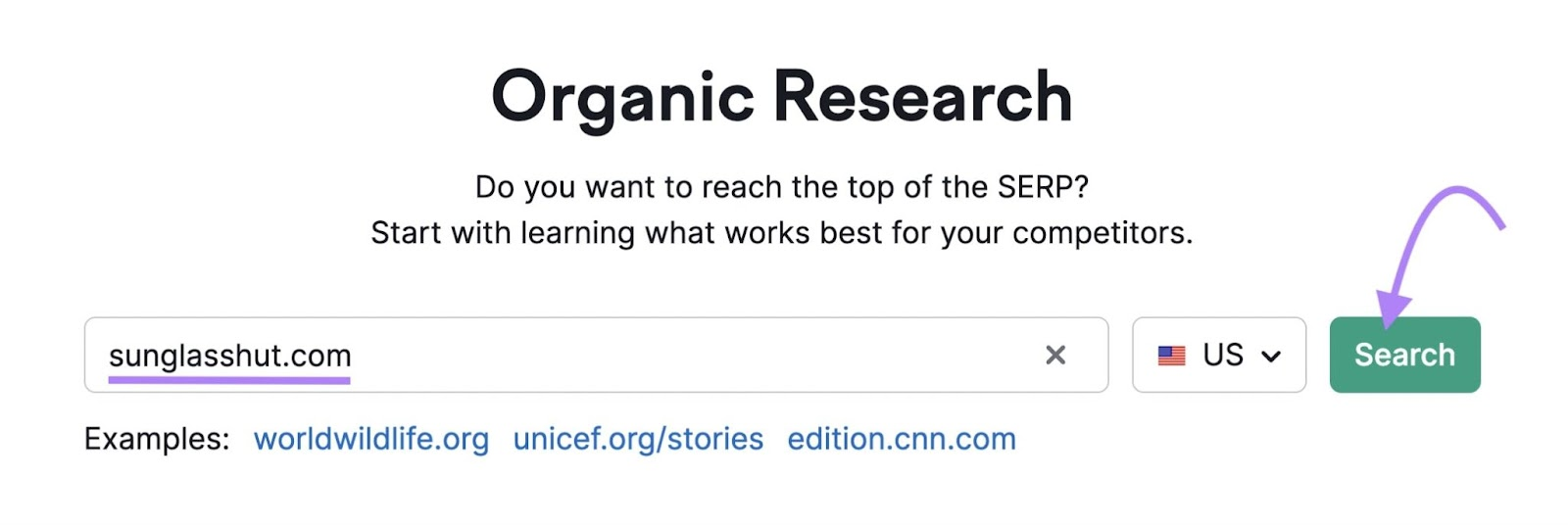
Navigate to the “Positions” tab to view all keywords your site ranks for.
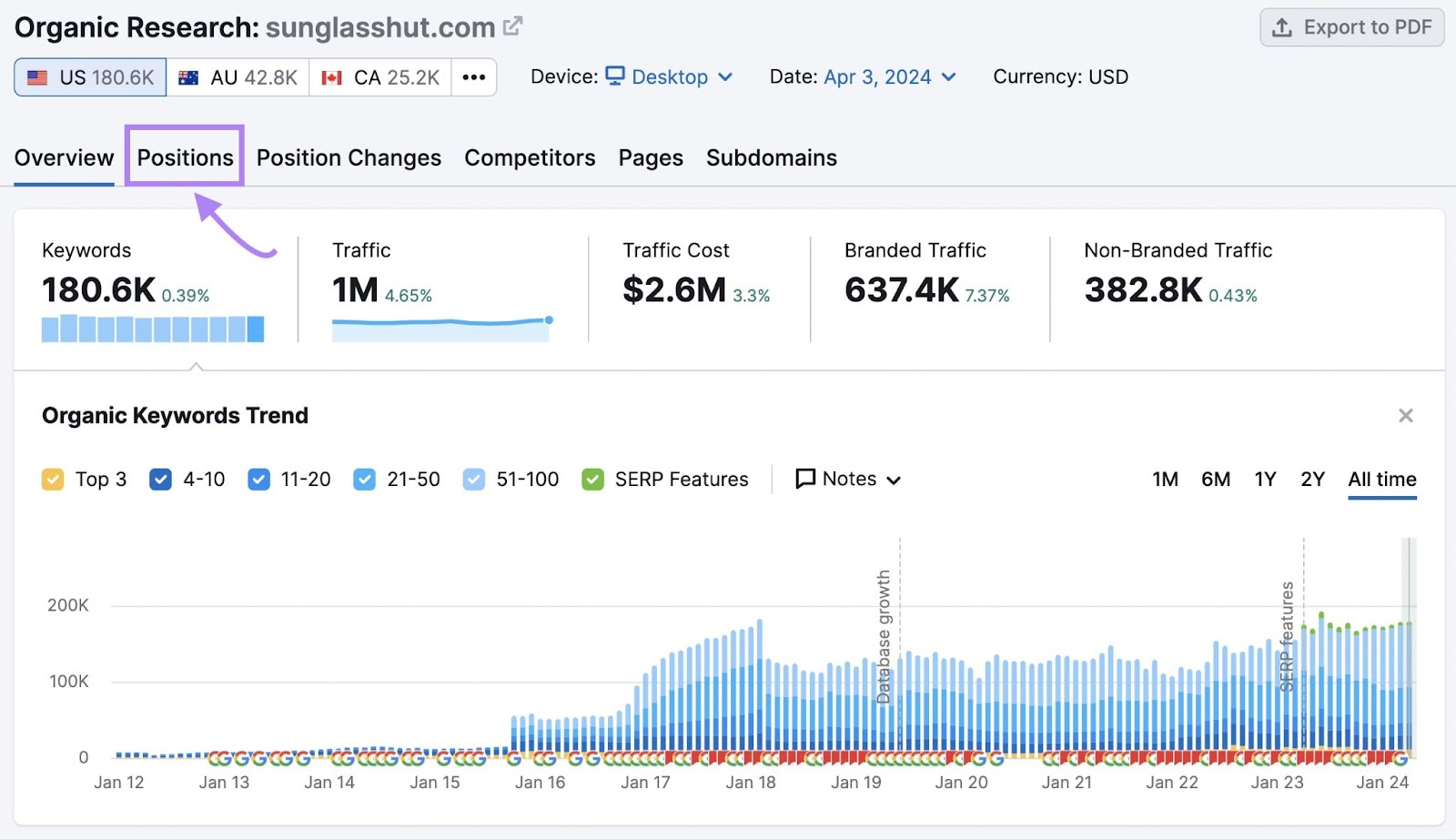
To see just the keywords you have sitelinks for, click the “SERP features” drop-down, hover over “Domain ranks,” and choose “Sitelinks.”
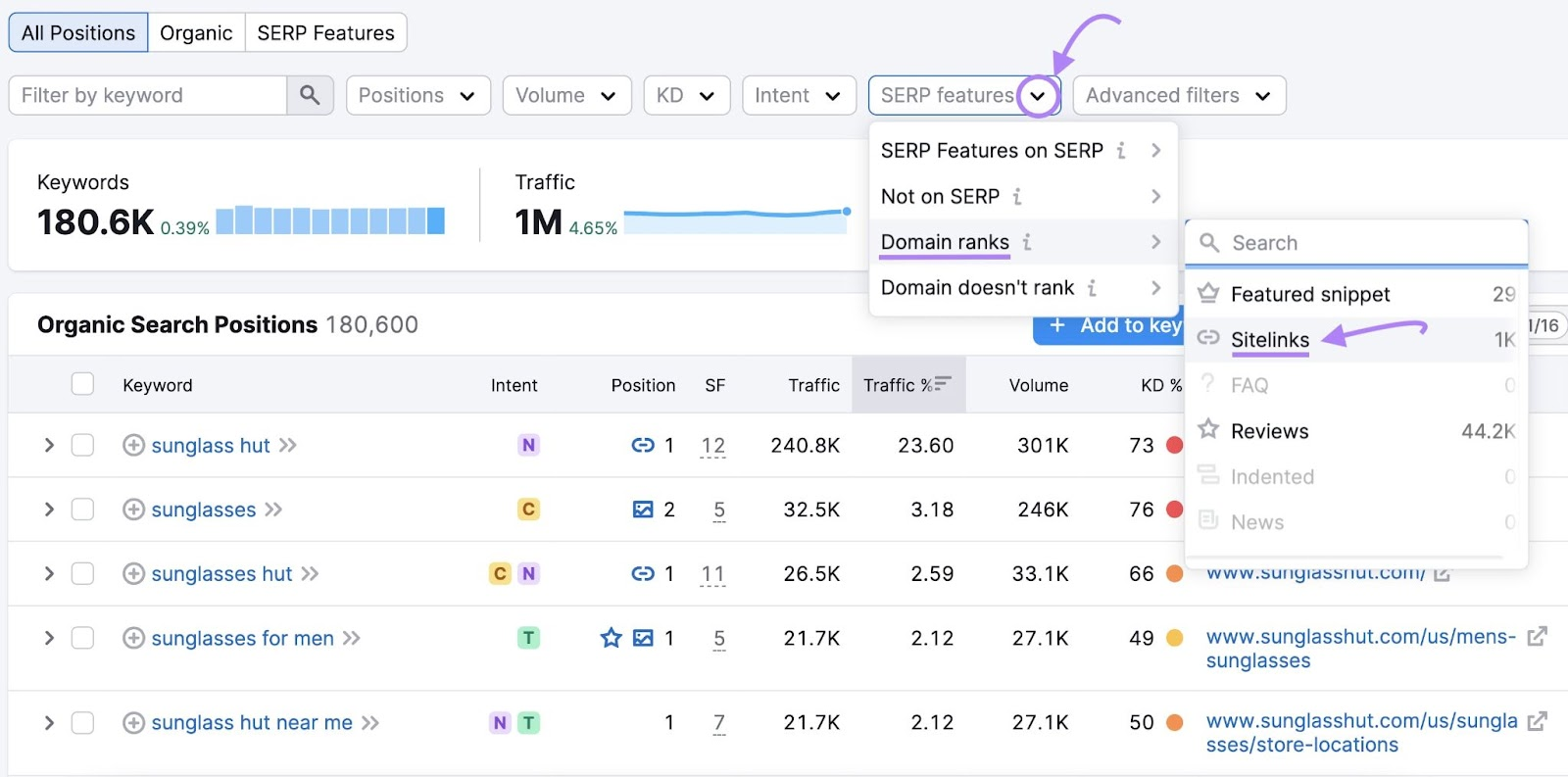
You’ll see all the keywords that trigger sitelinks for your domain.
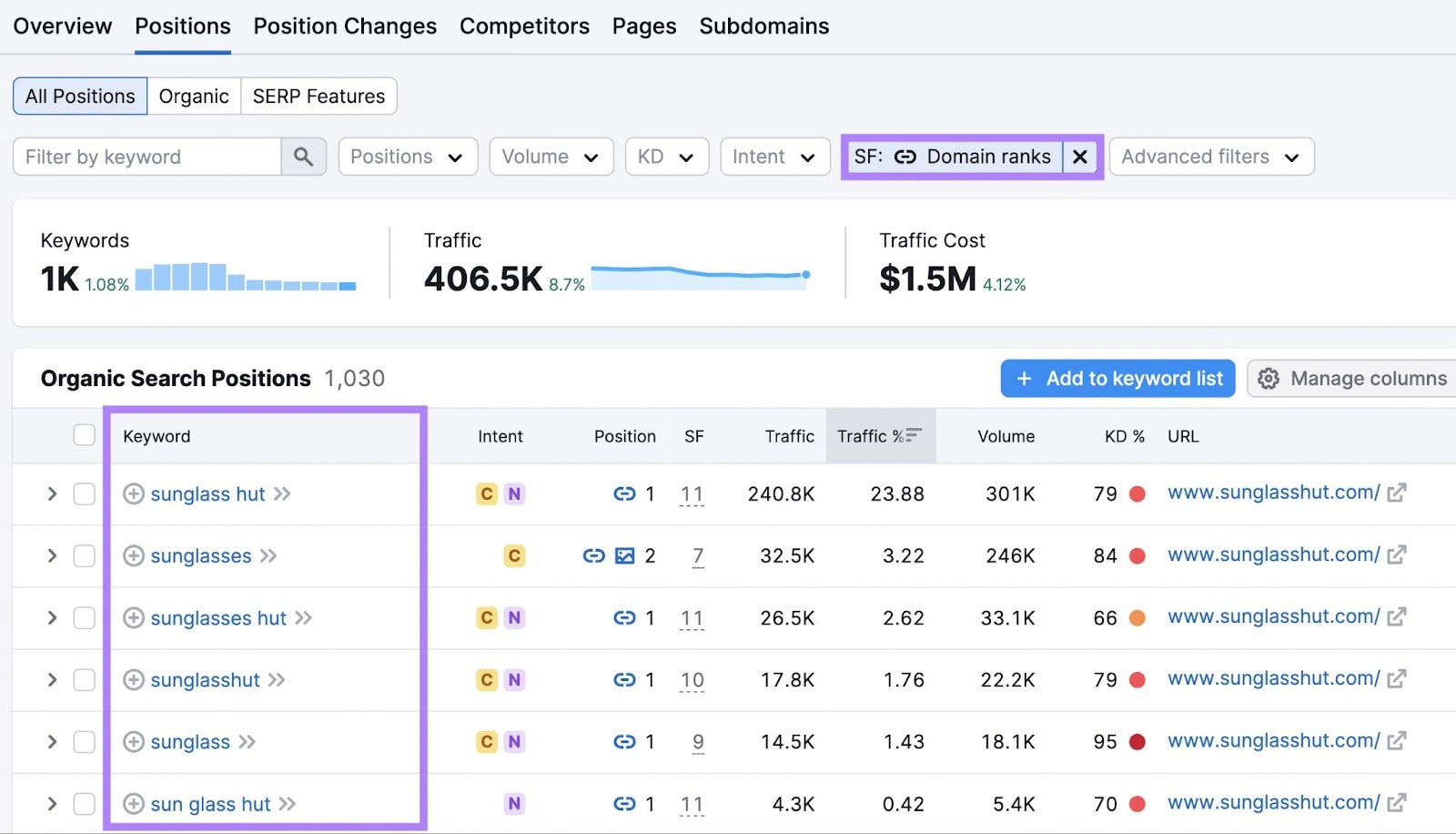
To see keywords your domain ranks for but doesn’t show sitelinks, click the “SERP features” drop-down, hover over “Domain doesn’t rank,” and then choose “Sitelinks.”
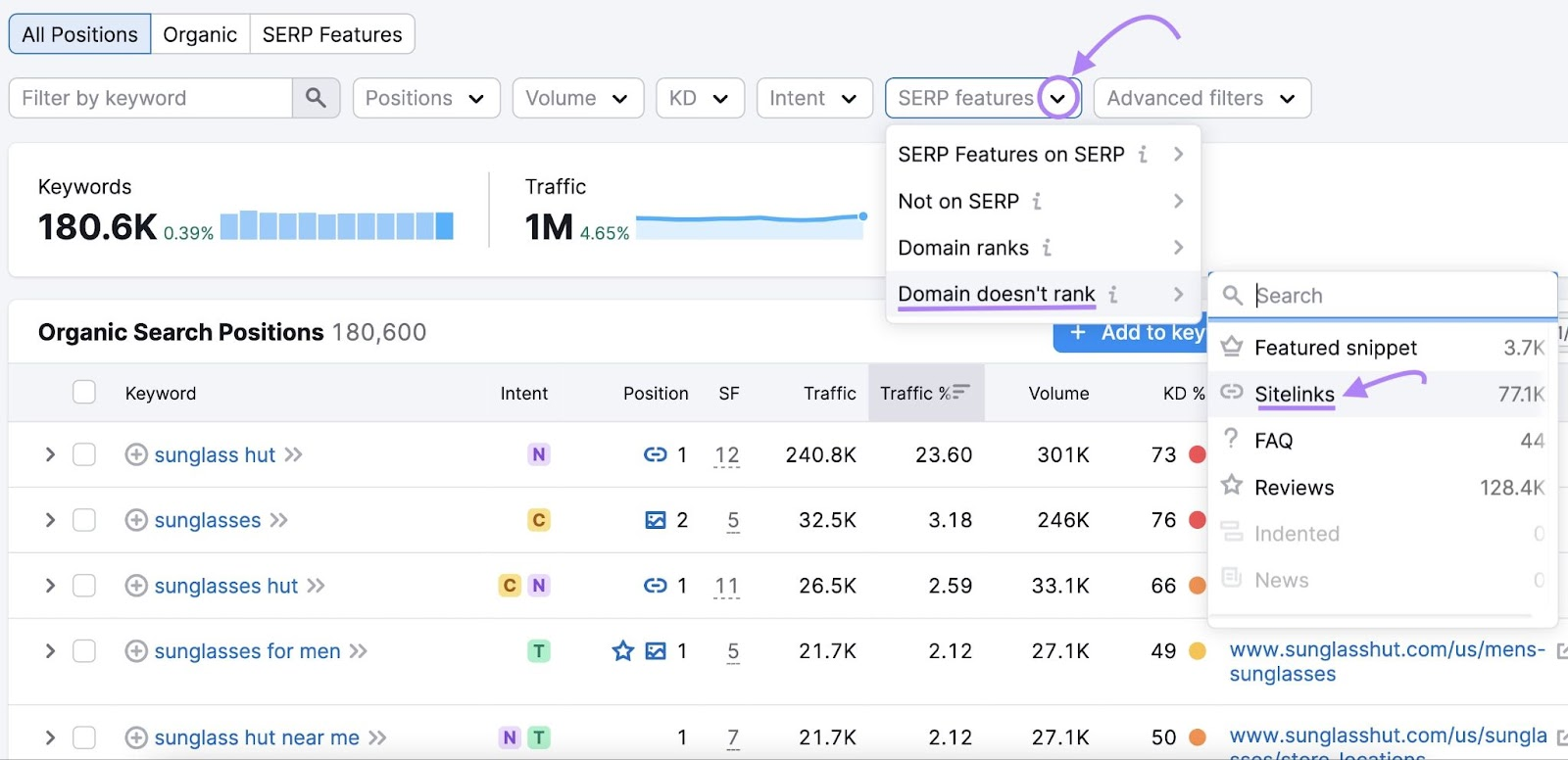
You’ll see keywords you rank for, but that don’t show sitelinks for your domain.
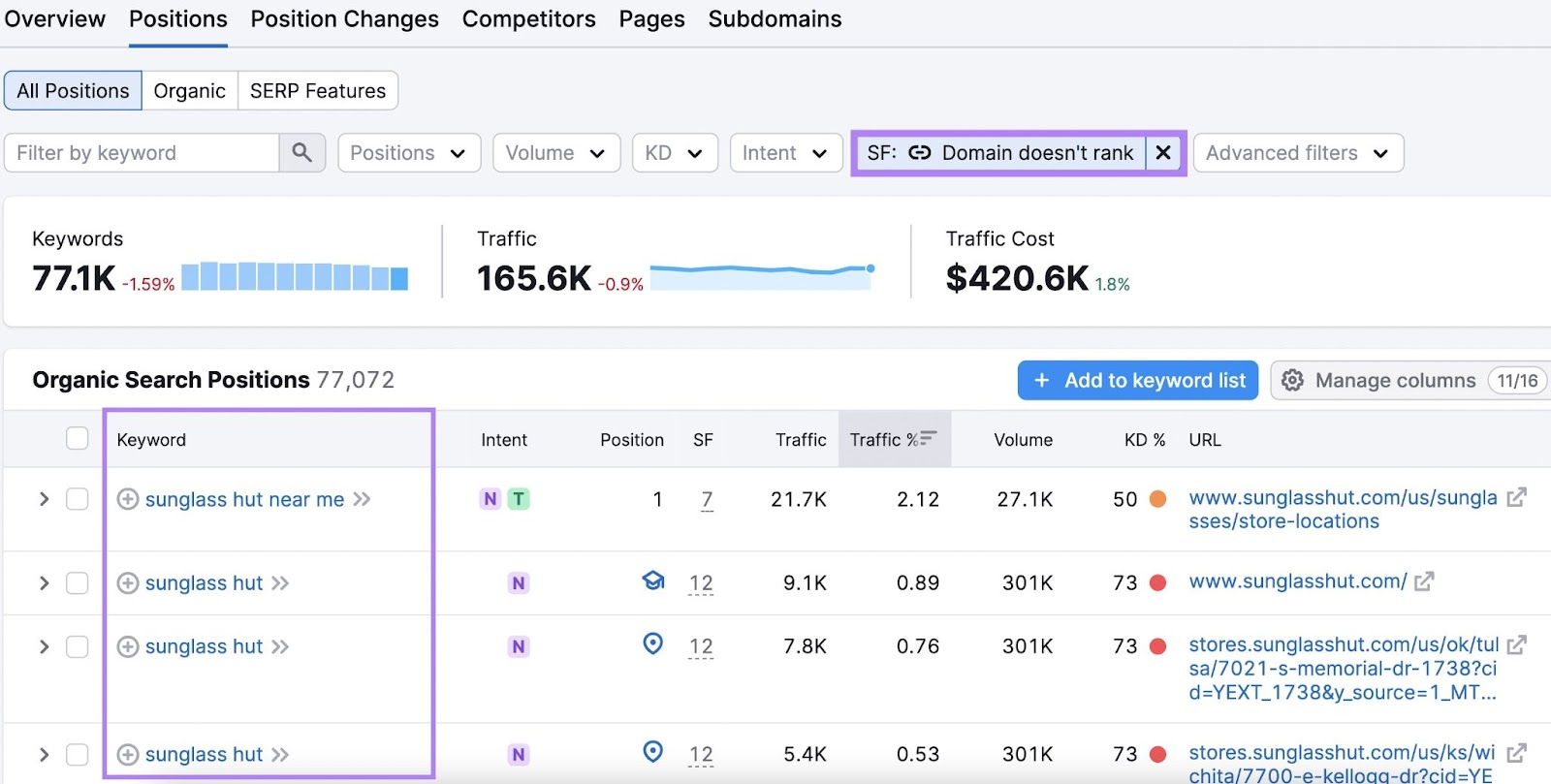
Next, apply the best practices discussed above (regarding site structure, internal links, descriptive title tags, and so on) to improve your chances of earning sitelinks for those keywords.
Get access to this data with the Organic Research tool and start identifying more opportunities to appear with sitelinks.


